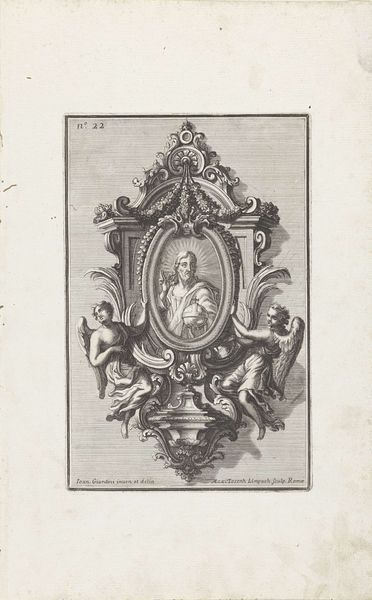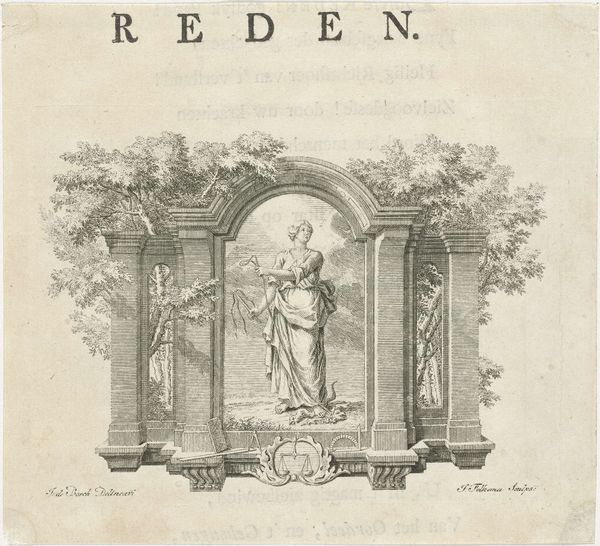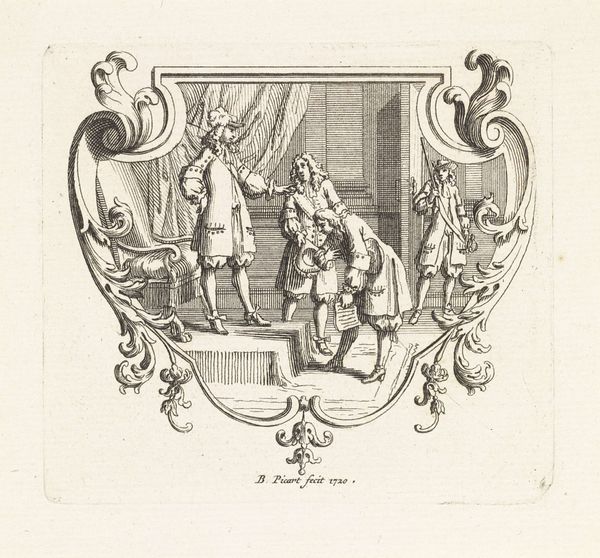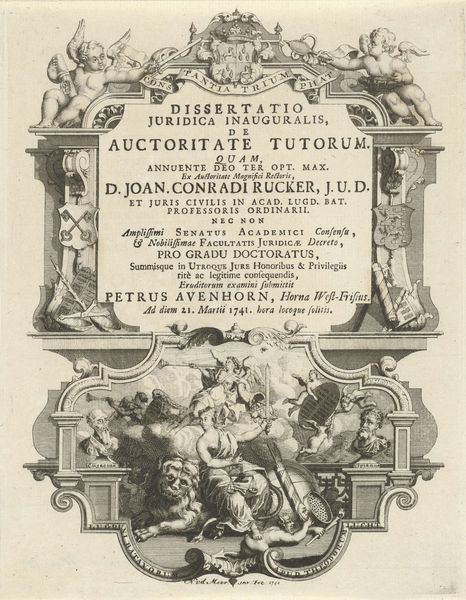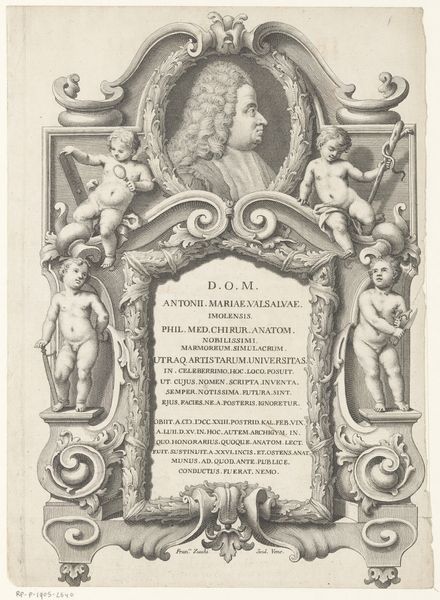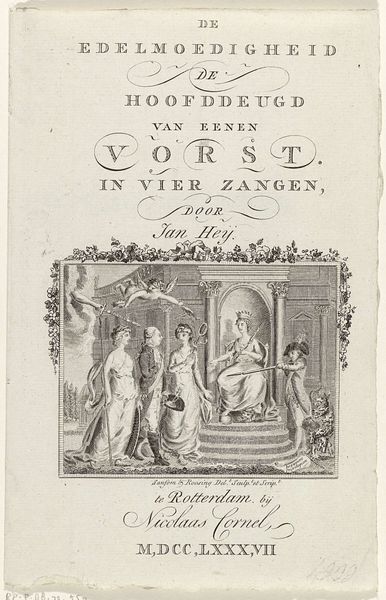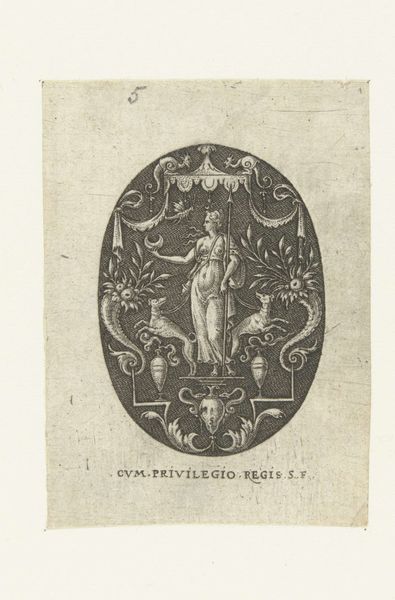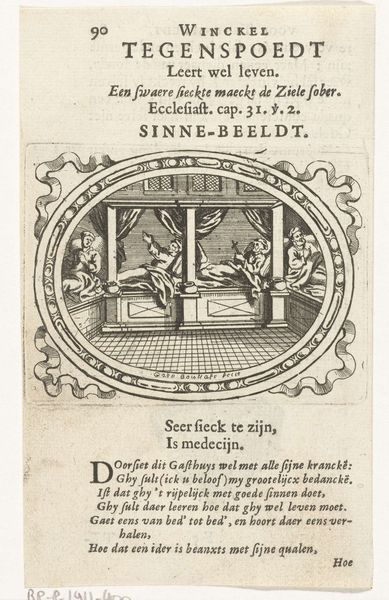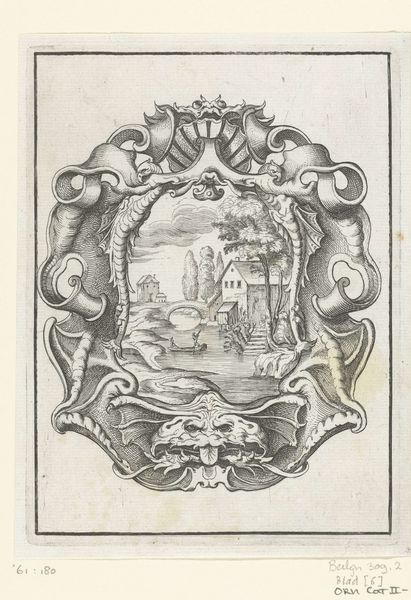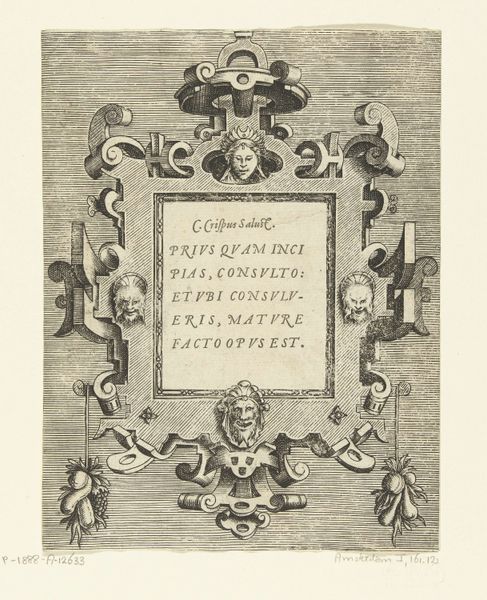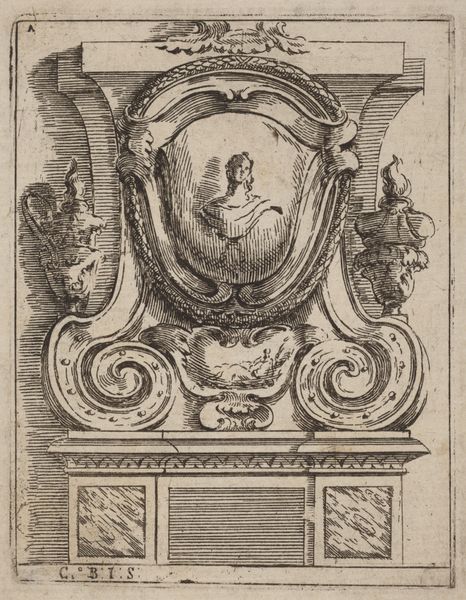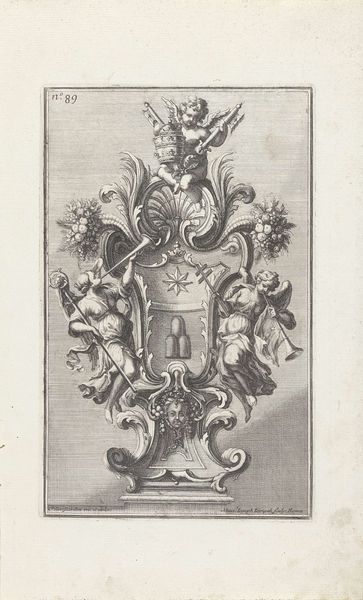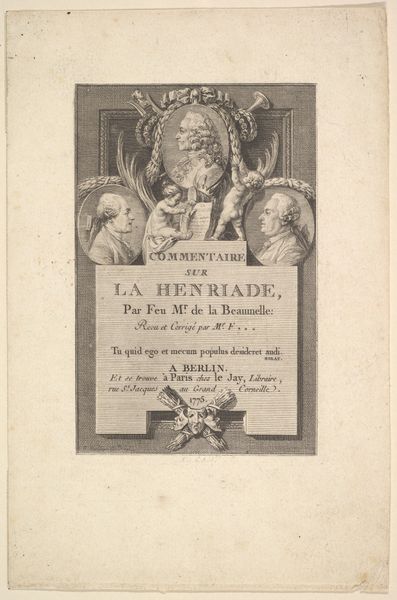
graphic-art, print, engraving
#
graphic-art
#
allegory
#
baroque
# print
#
engraving
Dimensions: height 91 mm, width 120 mm
Copyright: Rijks Museum: Open Domain
Jacob Folkema created this print, "Vignet met de personificatie van Ondeugd" - or "Vignette with the personification of Vice" - sometime before his death in 1767, using the technique of etching. Etching, like engraving, is an indirect form of printmaking. The artist covers a metal plate with a waxy, acid-resistant ground, then draws through it with a stylus. When the plate is bathed in acid, the exposed lines are bitten, leaving an impression that will hold ink. In this case, the result is a crisp, highly detailed image. Notice the way Folkema uses line to create a sense of depth and shadow, giving volume to the allegorical figures of Vice. And consider the labor involved – all those tiny, precise marks incised by hand. Prints like this were relatively inexpensive, designed to be consumed and circulated widely. They remind us that art doesn't have to be a unique, precious object to be meaningful. The act of making, and the social context in which that labor occurs, are just as important.
Comments
No comments
Be the first to comment and join the conversation on the ultimate creative platform.
